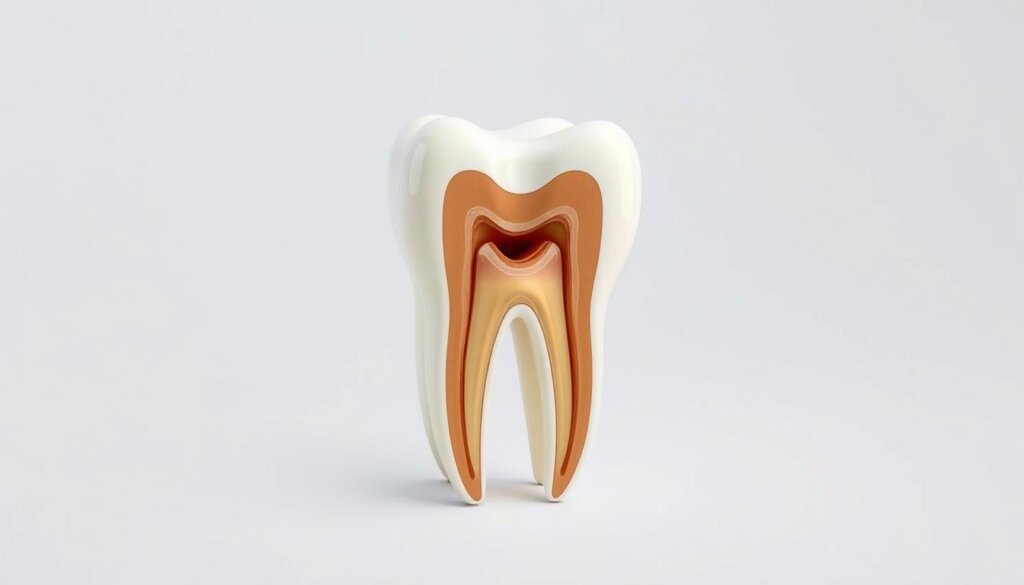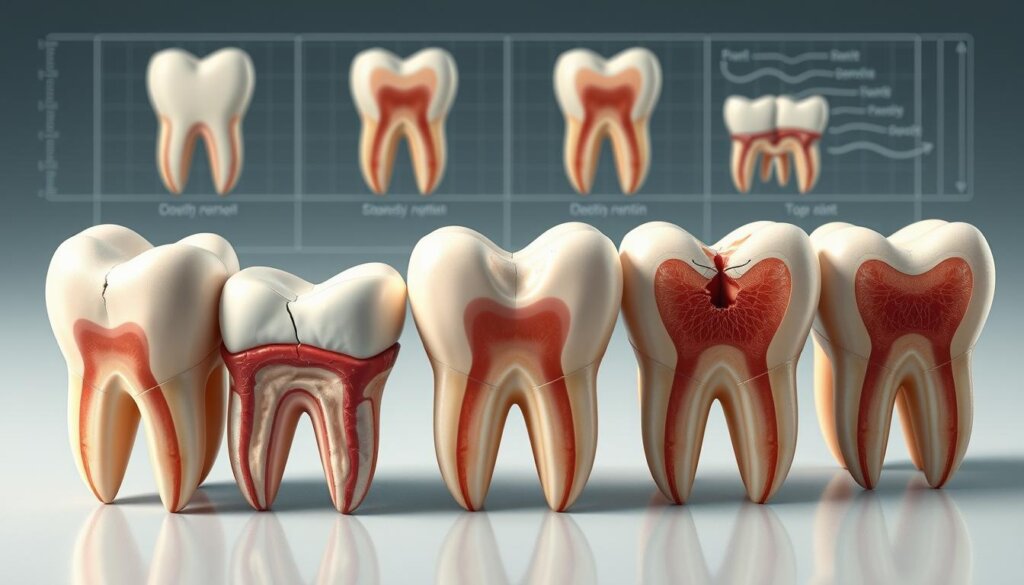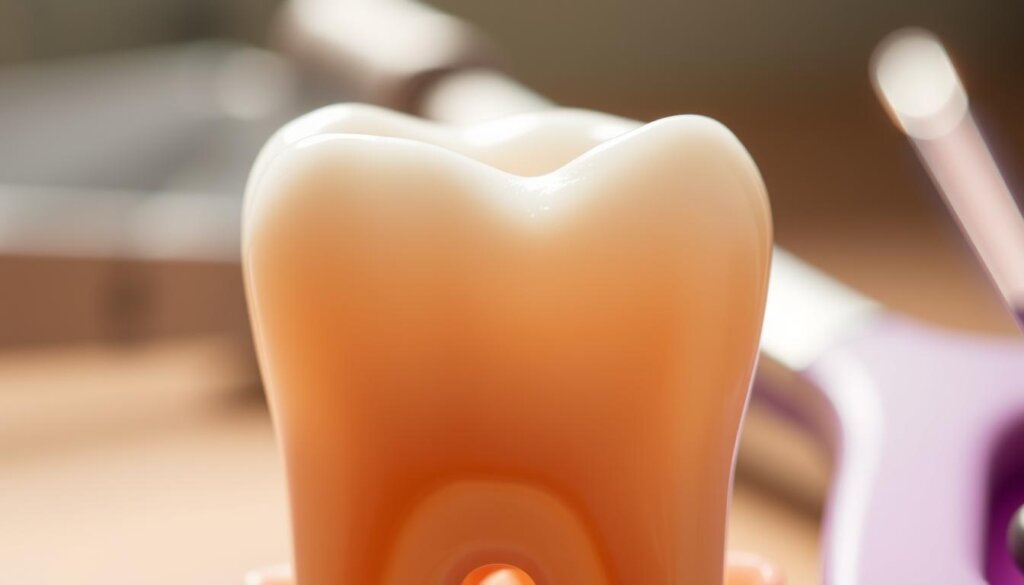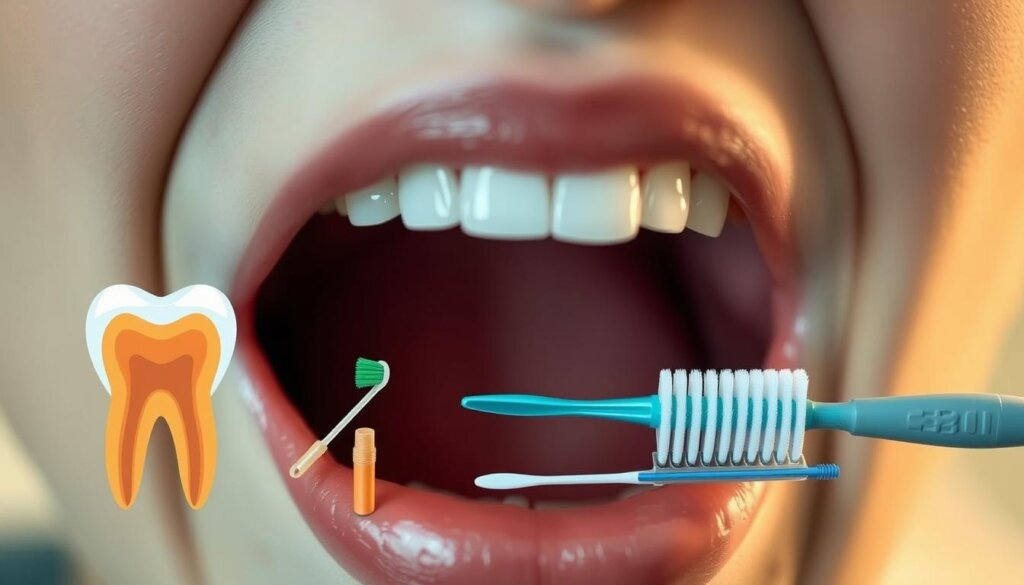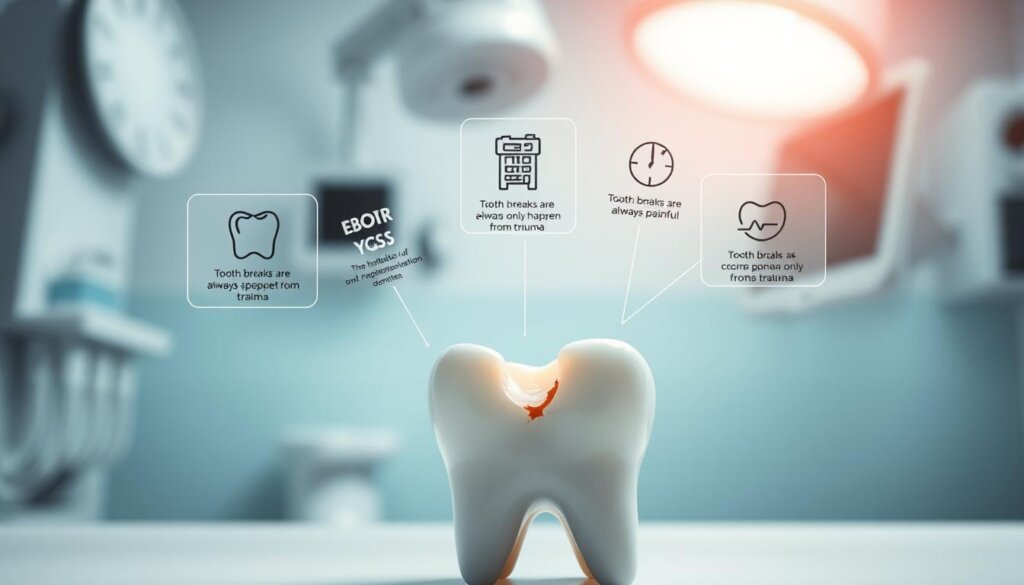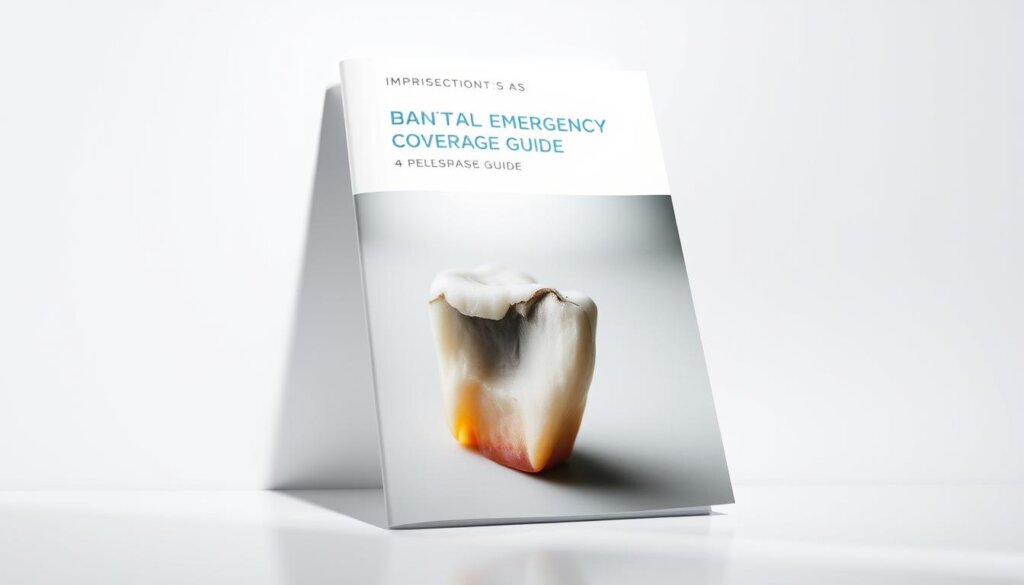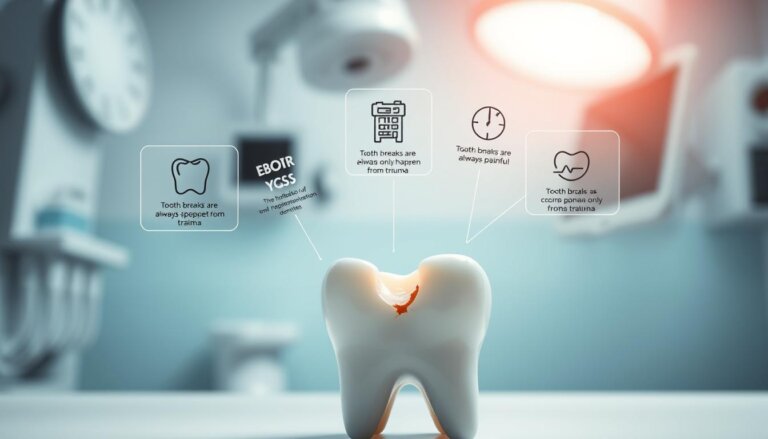Accidental Tooth Breaks: Causes & Prevention Tips
Every year, many Americans face the shock of a broken tooth. It’s surprising to learn that 1 in 6 people will have a dental emergency broken tooth during their lifetime. This shows how common this issue is. Even though tooth enamel is very strong, it can still break. There are many reasons why teeth break, from simple accidents to unexpected events. Knowing these causes is the first step to preventing them.
Oral health emergencies can range from minor chips to big fractures. It’s important to know the risks and strengthen your teeth to avoid them. The effects of oral health accidents go beyond just feeling pain; they can lead to serious problems if not treated right away. Portman Dental Care offers options like 0% finance, making it easier for everyone to get the care they need without worrying about cost.
Key Takeaways
- Understanding the frequency of accidental breaks can raise awareness and encourage preventive action.
- Awareness of the various causes of dental breaks can lead to better protection strategies.
- Immediate response to a dental emergency broken tooth is crucial in preventing further complications.
- Financial plans such as those offered by Portman Dental Care ensure that treatment accessibility is within reach.
- Oral health is not merely about aesthetics; it’s integral to overall physical well-being, underscoring the importance of addressing oral health accidents promptly.
Understanding Tooth Structure and Vulnerability
Our teeth are key to oral health but can be damaged. Knowing how a tooth is built and its weak spots helps prevent tooth fracture prevention and reduces tooth injury causes. We’ll look at tooth structure and highlight areas at risk for common tooth accidents.
Anatomy of a Tooth
A tooth has several parts: the crown, enamel, dentin, pulp, and root. The enamel is the toughest substance in our bodies. It protects the crown. Right under the enamel is the dentin. It’s softer but supports the enamel and handles stress from eating. The pulp is the tooth’s core, with nerves and blood vessels vital for health. The root fixes the tooth in the jawbone.
Common Weaknesses
- Enamel can get thinner because of acidic foods, harsh brushing, or just wear and tear. This makes teeth prone to breaking.
- Cavities weaken teeth if not treated, leading to an increased risk of fractures with everyday use.
- Big fillings restore teeth but can make them weaker. This may lead to cracks later on.
Understanding these parts and their weak spots is key for tooth fracture prevention. Going to the dentist regularly is vital. It keeps our teeth strong and stops common problems from causing damage or injury.
Common Causes of Accidental Tooth Breaks
Accidental tooth breaks are common and often need quick help. Knowing why they happen can help us prevent them, making our teeth healthier.
Eating Hard Foods: Eating hard things like ice, candies, or nuts can hurt our teeth. If your teeth are weak, they might chip or crack easier.
Sports Injuries: Not wearing mouthguards in sports like hockey or football can harm your teeth. Mouthguards are key to keeping teeth safe.
Falls and Accidents: Falls or accidents can quickly break teeth. They can cause big dental problems that need urgent care.
Brushing Too Hard: Brushing your teeth too hard can also damage them over time. It’s best to use a soft brush and be gentle.
Understanding these causes can help us avoid tooth breaks. It shows how important dentist visits and using the right dental products are.
Risky Activities Leading to Tooth Fractures
Some activities can greatly increase your chances of tooth fractures. This can be a big problem for your oral health. It’s important to know these dangers and avoid them to keep your teeth safe.
Contact Sports Without Protection: Playing high-impact sports like hockey, football, or martial arts can harm your teeth. Not wearing proper protective gear can lead to accidents. Mouthguards are essential for athletes. They protect teeth from injuries by softening the impact of hits.
Using Teeth as Tools: It’s common for people to use their teeth to open bottles or tear packages. This can put too much pressure on your teeth, leading to chips or breaks. It’s better to use actual tools instead of your teeth for these tasks.
Chipped Teeth Due to Grinding: Teeth grinding, also known as bruxism, often happens without us knowing, especially at night. Grinding can wear down tooth enamel and make teeth weak. This raises the chance of chips and fractures. Wearing a night guard can help protect your teeth and keep them strong.
Signs and Symptoms of a Broken Tooth
Knowing what to look for is essential when you think you have a broken tooth. Spotting the signs early can prevent bigger oral health problems. It’s important to act quickly if you think your tooth is broken, to avoid more damage and get the right treatment.
Pain and Sensitivity
Pain is a key sign that you might have a broken tooth. It gets worse when you bite or when your tooth touches something very hot or cold. This pain can be sharp and quick or a long-lasting ache.
Visible Damage
Seeing cracks, chips, or fractures on a tooth means it might be broken. These damages can be small chips or big cracks that show the inside of the tooth.
Swelling and Discomfort
Often, a broken tooth will cause swelling or discomfort in the gums nearby. This inflammation can make it hard to chew or close your mouth right.
Spotting these signs helps you deal with the pain from a broken tooth. Getting help right away is important. It keeps your teeth healthy and stops worse problems from happening.
Types of Tooth Breaks and Their Severity
Our teeth are built strong to handle everyday biting and chewing. Still, they can get damaged. It’s key to know about the different kinds of tooth breaks and how they can affect our dental health. There are many reasons these breaks can happen, from simple accidents to specific injuries.
Let’s talk about tooth injuries, focusing on minor and major breaks:
- Minor chips usually just affect the tooth’s outer layer and don’t reach the inner layer. They often don’t need immediate treatment.
- Major breaks go deeper into the tooth, reaching parts that can cause pain or even lead to tooth loss.
Looking closer at the types of fractures:
- Simple Cracks – Just surface cracks that might not need quick treatment, but should be watched.
- Broken Cusps – When part of the chewing surface comes off, usually they don’t hurt the inner tooth.
- Vertical Root Fractures – These start at the bottom and are hard to spot until they cause infection.
The harm to dental health depends on how bad the break is:
- Minor breaks might just need a simple fix like bonding or fillings.
- Bigger breaks might need more serious treatment, like a root canal or even removing the tooth.
Preventative Measures: Wearing protective gear and not using teeth as tools can help avoid breaks. Regular dentist visits help catch small issues early.
In conclusion, knowing about tooth breaks, the reasons behind them, and their impacts helps us take better care of our dental health.
Immediate Steps After Breaking a Tooth
Knowing what to do right after breaking a tooth is very important. It can really change the outcome. If your tooth breaks because of a mishap or just by biting something hard, act fast.
First, rinse your mouth with warm, clean water. This helps get rid of food or other stuff around the tooth. Swishing water gently can also ease some of the pain.
Then, put a cold compress near the tooth to lessen swelling and pain. Make sure to use it off and on — 20 minutes on, 20 minutes off. This avoids harming your skin while still being effective.
Avoid eating hard, sticky, or very crunchy foods after you break a tooth. They can make the damage worse. Instead, choose soft foods and drinks to reduce stress on your tooth until you see a dentist.
For severe pain or a lot of bleeding, get to a dentist quickly. If you have a dental emergency broken tooth, call your dentist right away. Saving any pieces of the tooth in milk or saliva might help your dentist fix it.
Knowing how can someone accidentally break a tooth may help you prevent it. Whether it’s using your teeth as tools, eating hard foods, or getting hurt in sports, be careful to avoid dental accidents.
Seeking Professional Help Post-Injury
Having an accident that hurts your teeth means you need to get professional help fast. Waiting can make things worse. Knowing what happens at the dentist after an injury can make you less worried.
The criticality of prompt dental care following a tooth injury cannot be overstated. Delays can lead to complications, including pain, infection, and loss of the tooth altogether.
Importance of Prompt Dental Care
Getting help quickly is very important if you have a dental emergency, like a broken tooth. Fast, expert care helps stop the pain. It also lowers the chance of getting an infection.
- Prevents further damage to the tooth and surrounding tissues
- Reduces the risk of infection, which can complicate the treatment process
- Increases the chance of saving the tooth, especially in cases of avulsion or severe breakage
What to Expect During a Dental Visit
When you go to the dentist after a tooth accident, they will check your teeth carefully. This is what usually happens:
- Assessment: The dentist looks closely at the hurt area to see how bad it is.
- Treatment Planning: The dentist will decide on the best fix. This might be bonding, veneers, crowns, or root canal therapy. They aim to make your tooth work and look good again.
- Preventive Guidance: After fixing your tooth, the dentist will give tips on preventing future accidents and keeping your teeth healthy.
Knowing what goes on helps you feel ready and can help your mouth heal better. Acting fast after hurting your tooth is really important. It makes sure you keep your smile healthy.
Long-Term Consequences of Ignoring a Broken Tooth
Ignoring a dental emergency broken tooth can lead to big problems. Not fixing your tooth right away can make it worse over time. Understanding the risks might push patients to get help quickly, avoiding further issues.
Risk of Infection: Not treating a broken tooth can let bacteria sneak into the tooth’s inner part. This could lead to painful infections or abscesses. These abscesses could spread the infection to other body parts.
Compromised Tooth Integrity: A broken tooth that’s not fixed gets weaker. It can break more easily, even when you’re just eating. This could lead to losing the tooth.
Potential for More Extensive Damage: A broken tooth could break even more if not treated. Early fixes might include a filling or a crown. If you wait too long, you might need a root canal or even have the tooth removed.
The consequences of not fixing a dental emergency broken tooth are serious. The table below shows what could happen depending on how quickly you act after breaking a tooth.
| Immediate Action | Delayed Action | Long-Term Neglect |
|---|---|---|
| Simple dental procedures (filling, crown) | Complex procedures (root canal) | Potential tooth loss and replacement (implants, bridges) |
| Lower cost | Increased cost due to complexity | Highest cost with possible recurring issues |
| Quick recovery | Extended treatment time | Possibility of chronic dental problems |
Ignoring a dental emergency broken tooth means more than just dealing with pain—it’s a big health risk. Getting help right away can save your tooth and avoid more dental problems. This highlights the need for quick medical care.
Preventive Measures to Avoid Accidental Breaks
Adopting a proactive stance in your daily habits is crucial for tooth fracture prevention. This approach can greatly cut down the risk of dental injuries. It also makes your teeth stronger and healthier.
Eating the right foods is important to avoid harming your teeth. Hard candies and ice can cause damage. Picking softer foods helps keep your teeth safe and strong.
Playing sports can sometimes lead to tooth injuries. Wearing mouthguards during these activities can protect your teeth. These devices help avoid damage by cushioning any impact to your mouth.
Getting regular dental checkups is essential for keeping teeth healthy. These visits help find and fix small problems early. Check out this routinely scheduled dental checkup page for info on exams and X-rays.
By following these steps, you can help prevent tooth damage. This not only protects your teeth but also boosts your overall dental health. It’s good for your long-term health too.
Strengthening Your Teeth
Improving your oral health and avoiding oral health accidents can greatly lower the chances of breaking a tooth. We’ll discuss how fluoride, changing your diet, and using dental sealants can make your teeth stronger.
Importance of Fluoride
Fluoride is a key mineral in fighting tooth decay. Adding it to your dental care can fix weak enamel and guard against bacteria that cause cavities. This not only makes your teeth stronger against breaks but also helps fix early tooth decay.
Incorporating Calcium-Rich Foods
Calcium isn’t just good for bones, it’s critical for strong teeth too. Eating foods high in calcium like dairy, leafy greens, and fortified cereals can toughen up enamel and the bone around it. This makes it harder for oral health accidents to happen.
Role of Dental Sealants
Dental sealants are great for protecting back teeth from decay and reducing enamel wear. They’re a good preventive step for kids and teens, but adults can benefit from them too.
| Intervention | Benefits | Recommended For |
|---|---|---|
| Fluoride Treatment | Rebuilds weakened enamel, prevents decay | All ages |
| Calcium-Rich Diet | Strengthens tooth enamel and bone | All ages, especially young children and adolescents |
| Dental Sealants | Protects against decay, shields grooves and fissures of teeth | Children and teenagers; applicable to adults |
Common Myths About Tooth Breaks
It’s key to clear up falsehoods about tooth injuries for better dental care and knowledge of common tooth accidents. Wrong ideas can make people wait too long for treatment, leading to worse problems. It’s important to fix these misunderstandings about how tooth injuries happen.
Many think that only kids get tooth breaks because they’re often running around and not always careful. But, adults face the same risks, especially if they play sports or do things that might hurt their mouths.
Also, tooth injuries don’t always hurt right away. Some folks may not feel pain at first and think they don’t need to see a dentist quickly. This mistake can cause serious issues later, like infections or needing more dental work.
Another wrong belief is waiting to see a dentist only if the tooth problem gets really bad. Getting help early is vital, no matter if it hurts or not. This can stop more damage and keep your teeth healthy.
| Myth | Truth |
|---|---|
| Only children break teeth | Adults at risk too, especially in sports |
| Tooth breaks are always painful | Some breaks may not cause immediate pain |
| Can wait to see a dentist | Immediate consultation is crucial |
The table shows the big difference between myths and real facts about common tooth accidents and tooth injury causes. Knowing the truth helps people act fast if they hurt their teeth. This protects their oral health and overall well-being.
How to Handle Toothaches After a Break
Experiencing a toothache after breaking a tooth is tough. It’s important to quickly manage the pain and prevent more damage. Knowing about over-the-counter options and home remedies is key for relief.
- Ibuprofen: Helps reduce inflammation and manage pain effectively.
- Acetaminophen: Useful for pain relief if anti-inflammatory drugs are not suitable.
- Topical anesthetics: Applied locally to numb the area around the affected tooth.
Home Remedies for Tooth Pain
- Saltwater rinse: A natural disinfectant that helps to clean infection-prone areas.
- Cold compress: Apply to the cheek to reduce swelling and numb pain.
- Clove oil: Known for its analgesic properties, a drop on the affected area can provide temporary relief.
These steps help with quick relief, but they’re just the first step. They’re not a replacement for seeing a dentist. Seeing a dentist quickly is crucial to treat the pain’s cause. This not only helps the current issue but also strengthens teeth against future problems.
The Role of Dental Insurance in Treatment
When accidents like a broken tooth happen, knowing how dental insurance helps is key. It can reduce what you pay and make sure you get help fast. We’ll talk about how dental insurance is vital when dealing with unexpected dental problems.
Coverage for Emergency Dental Care
Most dental insurance plans help quickly with emergencies, covering a variety of treatments. This includes the first emergency care, repairs like fillings or crowns, and x-rays. It’s important to know what your plan covers to use your benefits best after an accident.
Understanding Policy Limits
Insurance plans have a max amount they pay in a set time, which impacts emergency care coverage. Knowing these limits helps you plan for costs that might not be covered. Often, there’s a limit on how much they’ll pay for certain treatments, leading to extra costs for you.
| Treatment Type | Covered Amount | Out-of-Pocket Estimate |
|---|---|---|
| Emergency Examination | 100% | $0 |
| Diagnostic X-Ray | 80% | $20-$50 |
| Follow-up Fillings | 70% | $30-$100 |
| Crowns and Caps | 50% | $250-$1000 |
Educating Children on Dental Safety
Teaching kids early about dental safety is very important for their teeth’s health in the future. It’s helpful to talk to them about the dangers of hurting their teeth and how to keep them safe. This way, parents and teachers help kids have better dental health as they grow.
Importance of Good Habits
Having good dental habits is more than just brushing and flossing every day. Kids need to learn what actions might break their teeth and how to avoid them. A big part of this is teaching them to wear mouthguards in sports, which helps prevent tooth damage.
Teaching Safe Practices in Sports
Telling kids to wear the right protective gear in sports is key to keeping their teeth safe. It’s important to let them know how mouthguards protect them from bad injuries when they’re active.
| Activity | Risk Level Without Protection | Benefit of Using Mouthguards |
|---|---|---|
| Basketball | High | Reduces risk of tooth fractures |
| Soccer | Medium | Protects against accidental impacts |
| Skateboarding | High | Prevents breakage from falls |
Talking about these safety steps and why they’re important can help kids make them a normal part of being active. This helps them to keep their smiles healthy and free of damage as they get older.
Conclusion and Final Thoughts on Tooth Care
We’ve looked at the importance of keeping our teeth strong and avoiding common dental problems. We learned that keeping our teeth healthy is an active process. It needs regular care and being mindful of how daily actions affect our teeth. We should also keep up with dental research to protect our teeth better.
For good oral health, just brushing and flossing isn’t enough. You should eat well, use fluoride and sealants, and wear mouthguards if needed. These steps can help avoid dental accidents and make our teeth stronger.
Learning about dental health should never stop. It helps keep our teeth looking good and working well. This means knowing when to see a dentist and staying updated on new dental care methods. All these efforts help shield our teeth from harm, keeping them in great shape for a long time.

